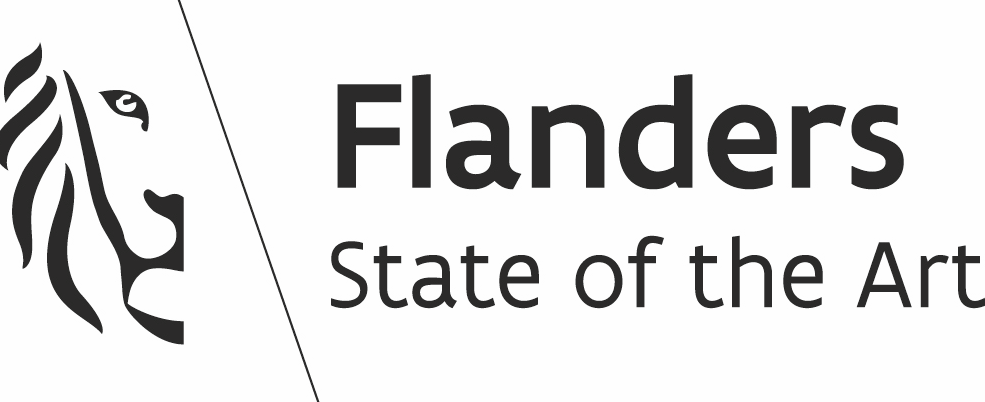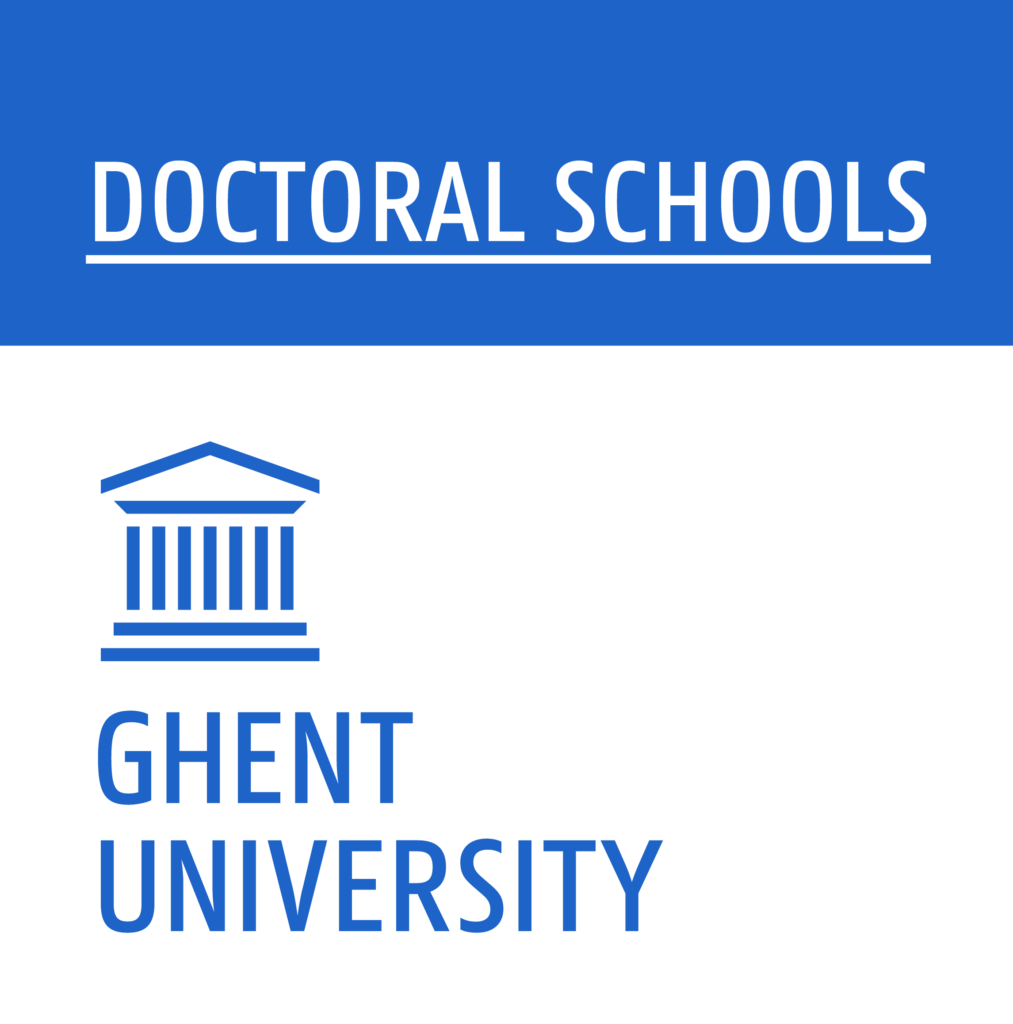The seminar series are funded by the
Flemish Government and
UGent Doctoral School.


Starting in academic year 2013/2014, the research group hosts a regular series of seminars, dedicated to our wide audience that includes physicists, students and engineers. These seminars feature excellent overviews presented by distinguished speakers and provide high value educational material for students . They prove to be the optimal venue for fruitful discussions between external experts and the group members.
The program for academic year 2022-2023 can be found below:
June 1th, 2023
(11:00, Campus Proeftuin (INW) – N3 lecture room)
Speaker: Juliana Stachurska
Neutrino Flavor Identification in IceCube
IceCube observes neutrinos of all flavors across a wide energy range. In the GeV energy range, the flavor composition measurement enables the determination of oscillation parameters. In the high TeV to PeV energy range, the flavor composition of astrophysical neutrinos carries information on the environments at cosmic neutrino sources. It requires sensitivity to each neutrino flavor: electron, muon, and the long-elusive tau. High-energy tau neutrinos can create a unique double cascade signature in IceCube, where the first cascade is created by the tau interaction and the second by the subsequent tau decay. Interestingly, heavy neutral leptons can create a similar signature at lower energy scales. I will introduce the signatures created by neutrino interactions across the energy scale accessible to IceCube, and highlight some associated recent analyses. I will then discuss the future extensions of IceCube, the IceCube Upgrade and IceCube-Gen2, and and the flavor results we may expect.
April 25th, 2023
(11:30, Campus Proeftuin (INW) – N3 lecture room)
Speaker: Karel Van Acoleyen (UGent)
An ultra-cold quantum experiment: the Bose-Einstein condensate
Cold atom experiments worldwide are currently playing a leading role in our explorations of the quantum world, as they give us a direct probe on systems of many atoms in the quantum regime. This has revealed a wealth of new experimental phenomena that are under vigorous theoretical study. At the same time, the exquisite level of control on these systems gave rise to the field of quantum simulation: with models that previously existed only in the mind of theorists, being realized experimentally by a cold atom set-up. Motivated by this we have recently started our own cold-atom experiment at Ghent University. As a first milestone we have created the first Belgian Bose-Einstein condensate and we are now further developing our set-up towards original experiments in the realm of non-equilibrium quantum field theory. In this talk I will give an overview of the experiment, our results thus far, and the future plans for our cold atom adventure.
March 28th, 2023
(11:30, Campus Proeftuin (INW) – N3 lecture room)
Speaker: Nicola Tamanini (Le Laboratoire des deux Infinis – Toulouse)
Gravitational wave cosmology with LISA
In this talk I will review the cosmological science case for the Laser Interferometer Space Antenna (LISA), a space mission designed to detect gravitational waves (GWs) at lower frequencies with respect to the ones probed by current Earth-based GW interferometers. LISA will detect different populations of GW sources, some of which at large cosmological distances. Some of these sources will be used as cosmological distance indicators, which will allow us to probe the expansion of the universe at all redshift between roughly 0.01 to 10, without relying on the standard electromagnetic (EM) cosmic distance ladder. Tight constraints on cosmological parameters, together with new insights on the nature of dark energy and on possible deviations from LCDM and general relativity, are expected outcomes of the mission. Furthermore LISA may observe a stochastic background of GWs originated in the early universe through different high-energy processes such as first-order phase transitions, cosmic strings, and non-standard models of inflation. The detection of such a stochastic background of GWs would provide a direct way to test early-universe physics in a completely independent and complementary fashion with respect to common EM observations.
March 7th, 2023
(11:30, Campus Proeftuin (INW) – N3 lecture room)
Speaker: Suvodip Mukherjee (Tata institue of fundamental research)
Data-Driven Exploration of Cosmic Mysteries using Gravitational Waves
Gravitational waves are a new observational probe that can enable data-driven tests of the fundamental laws of physics which govern the Universe. I will discuss how this avenue can explore new frontiers that can shape our understanding of cosmology and fundamental physics. I will show some latest findings using the current gravitational wave data and discuss novel techniques for discovering new physics from the upcoming multi-band gravitational wave observatories in the coming years.
January 17th, 2022
(11h30, Campus Proeftuin (INW) – N3 lecture room)
Speaker: Loukas Gouskos (CERN)
Search for Higgs boson decaying to a charm quark pair with CMS
The discovery of a Higgs boson with properties compatible with the Standard Model (SM) expectations opened a whole new chapter of exploration. One of the highest priorities of the LHC physics program is the detailed measurement of the couplings of the Higgs boson to other SM particles, which provides a crucial test of the fermion mass generation mechanism. The talk presents the latest CMS searches for the Higgs boson decaying to a charm quark pair using the full Run 2 dataset. Due to the nature of the signal, novel object reconstruction and identification tools and analysis techniques have been developed, leading to the most stringent constraints in Higgs-charm coupling to date. The analyses are validated by measuring the Z boson decay to a charm quark pair, yielding the first observation of this process at a hadron collider. Lastly, prospects for the High Luminosity LHC upgrade are also briefly discussed.
December 16th, 2022
(11:30, Campus Proeftuin (INW) – N3 lecture room)
Speaker: Bence Bécsy (Oregon State University)
Supermassive Black Hole Binaries and Where to Find Them
Pulsar timing arrays are sensitive to gravitational waves in the nanohertz frequency band. The most promising astrophysical sources in this regime are supermassive black hole binaries, which can form after major galaxy mergers. The vast majority of these will constitute a stochastic gravitational-wave background, while some of the brightest binaries might be detectable individually. In this talk, I will describe some of the challenges of searching for these binaries, like making efficient data analysis on unevenly sampled data with heteroscedastic noise, finding individual binaries in the presence of a stochastic background, or distinguishing multiple individual binaries. Overcoming these challenges will be crucial in order to be able to detect these systems, and thus learn more about the formation and evolution of supermassive black holes.
December 13th, 2022
(11:00, Campus Proeftuin (INW) – N3 lecture room)
Speaker: Simona Toscano (ULB)
Hunting cosmic accelerators with RNO-G
Cosmic accelerators are known to produce particles with energies exceeding 10^20 eV, but the acceleration and propagation processes are still not understood. Cosmic neutrinos are produced in interactions of these high-energy hadronic particles with surrounding photons and matter. Neutrinos, being weakly interacting particles, have the potential to escape unscathed from the inner part of the accelerators where cosmic rays have been generated, providing an unobstructed and intact view of the sources. IceCube has observed a high-energy neutrino flux in the TeV-PeV energy range, but because of its limited size and the expected low flux beyond PeV the discovery and study of the sources is challenging. The radio detection technique overcomes these limitations thanks to the high transparency of polar ice to radio frequencies. The Radio Neutrino Observatory – Greenland (RNO-G) aims at the detection of astrophysical and cosmogenic neutrinos flux at energies beyond the reach of IceCube. RNO-G is designed to be a discovery instrument and complementary to IceCube in terms of sky coverage. By 2026, this new observatory will be the largest in-ice neutrino telescope to date enabling the detection and study of the UHE neutrino flux and the extension of multi-messenger astrophysics toward higher energies. After an introduction of the field of neutrino astronomy and the reasoning behind the use of radio technique to detect UHE neutrinos I will discuss RNO-G. I will present the general status, expected performance and on-going work.
November 15th, 2022
(11:00, Campus Proeftuin (INW) – N3 lecture room)
Speaker: Jan Van Der Linden (KIT)
tt+heavy flavour measurements at the CMS experiment
Ten years after the discovery of the Higgs boson at the Large Hadron Collider (LHC), measurements of Higgs boson couplings to other particles are performed at the Compact Muon Solenoid (CMS) experiment with high precision. One area of Higgs boson coupling measurements is the associated production of a pair of top quarks with a Higgs boson (tt+H). In this talk, I will talk about the challenges of a tt+H measurement and its relevancy for probing the consistency of the Standard Model (SM). I will put emphasis on the identification of bottom quarks, which is an important tool for accurate tt+H measurements, as both the Higgs boson and top quark predominantly decay into bottom quarks. Furthermore, I will discuss a dedicated measurement of the most important background process of tt+H, the associated production of a top quark pair and a bottom quark pair (tt+bb), and how improvements in that measurement directly benefit the tt+H measurement.
October 28th, 2022
(16:00, Campus Proeftuin – N3 lecture room)
Speaker: Sumit Kumar (AEI Hannover)
Cosmology in the era of third generation gravitational wave detectors
The third-generation (3G) Gravitational wave (GW) detectors such as the Einstein telescope (ET) or Cosmic Explorer (CE) are expected to detect thousands of GW merger events per year with localization volumes less than a degree square. This will enable us to probe the large-scale structure (LSS) features such as baryon acoustic oscillations (BAO), clustering bias, etc, solely from the GW observations. In this talk, I will talk about the methods to detect LSS features such as BAO and clustering bias in 3G detectors era and their implications to do precision cosmology. Detection of LSS features as a function of redshift will help us in i) providing a complementary and independent probe to precision cosmology, and ii) strengthening the science case for the 3G detectors. I will show how detecting BAO features with GW observations might help in constraining the parameters for various cosmological models. The evolution of clustering bias can also help us in understanding the relation between clustering of baryonic matter and dark matter.